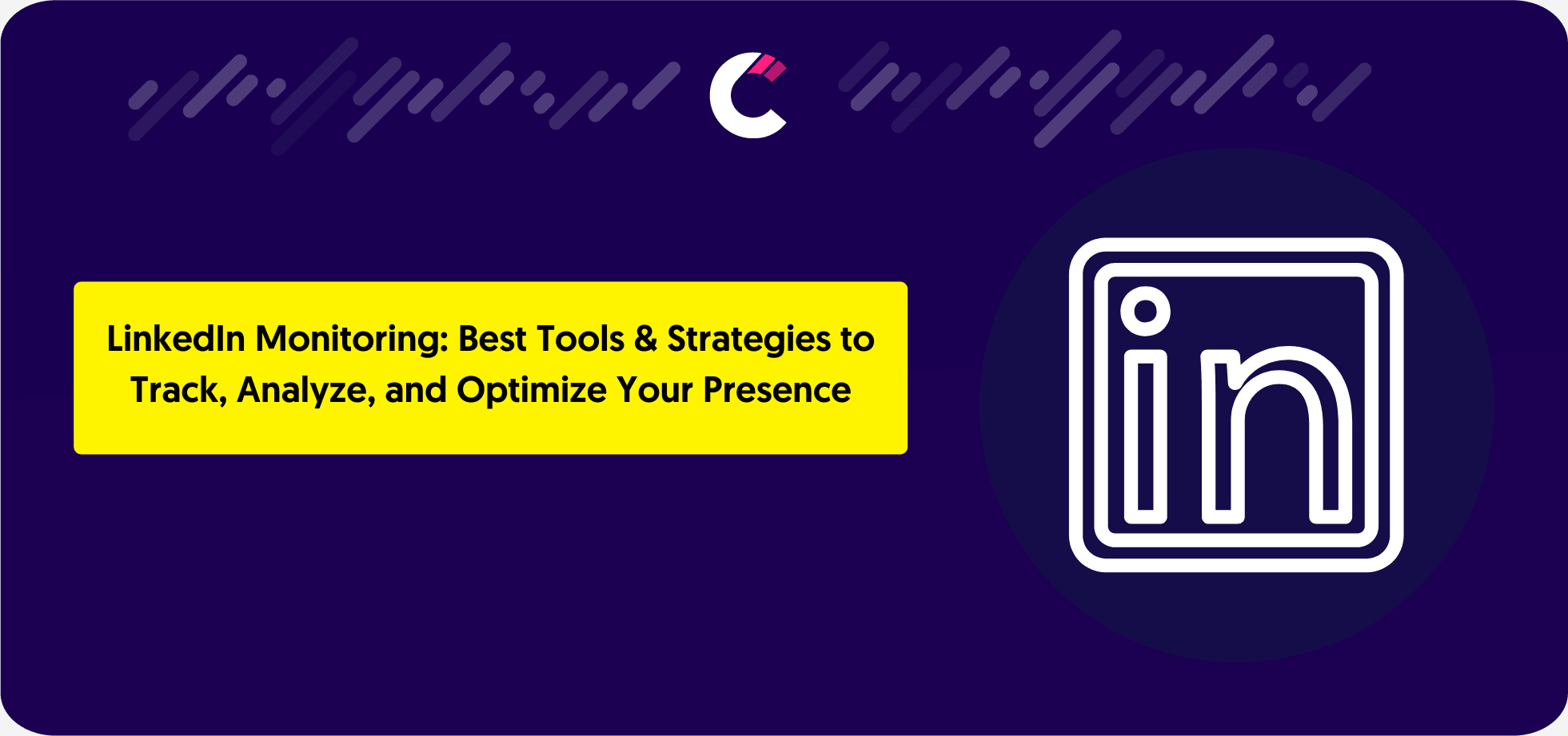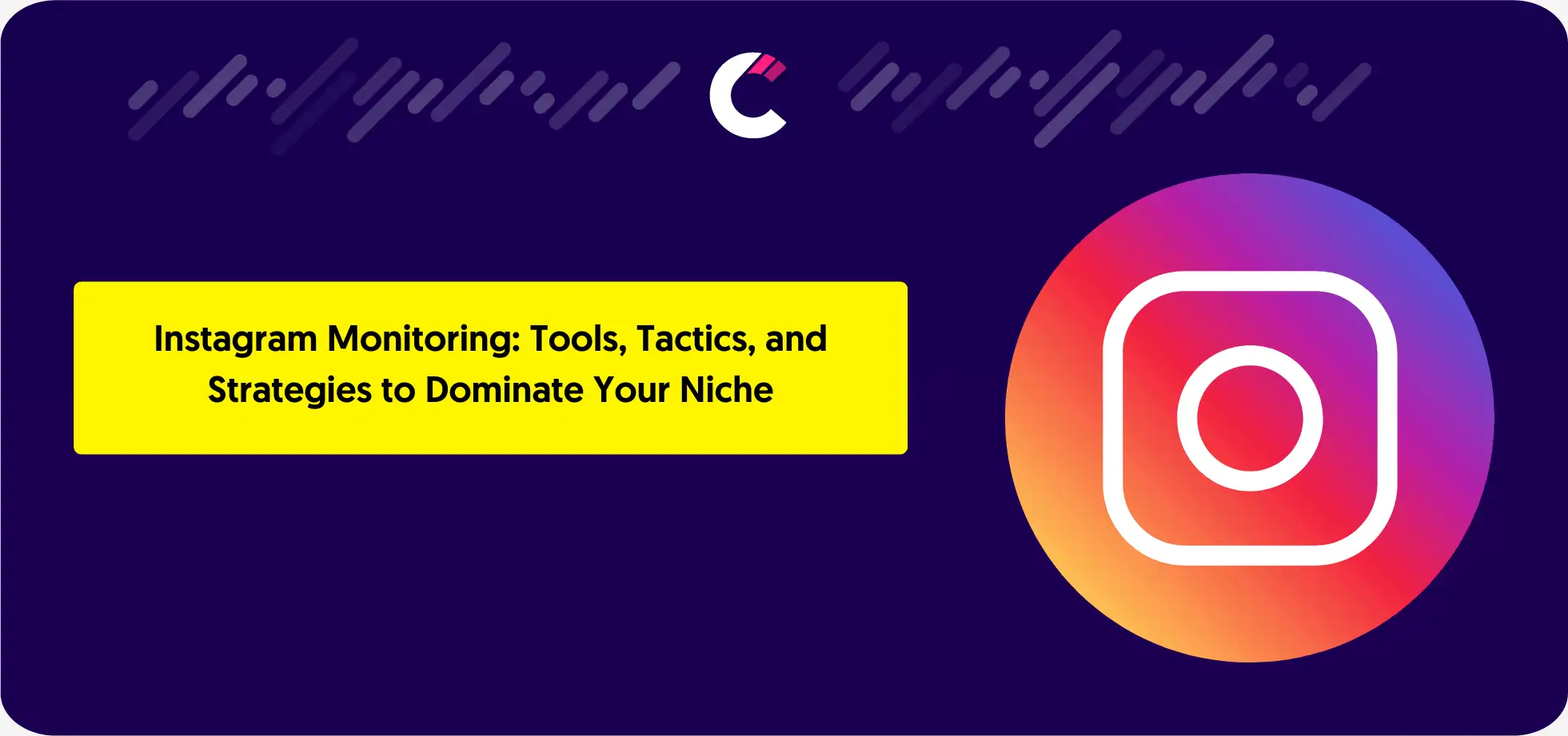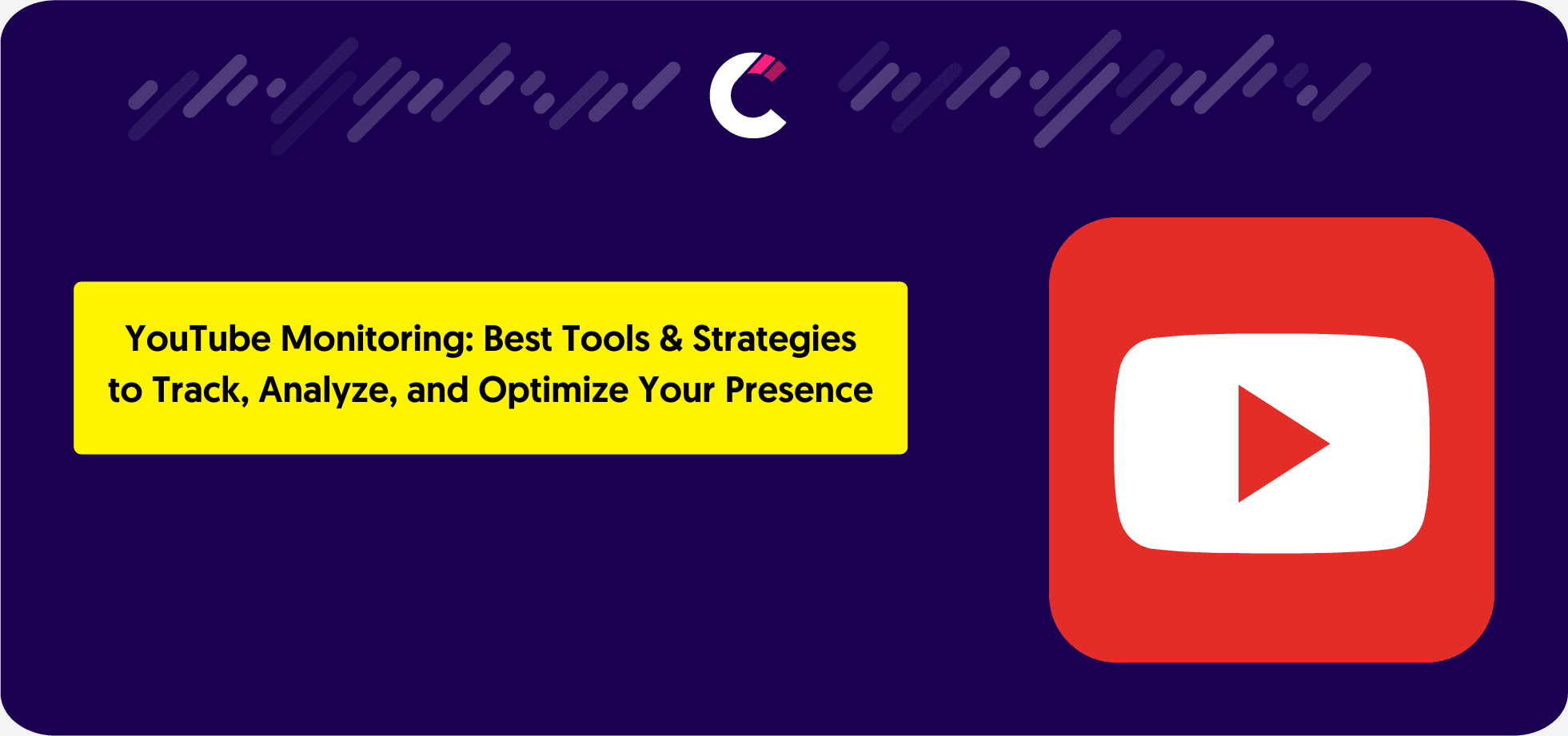What if your biggest competitors could unknowingly help you grow faster? The truth is, they already have—through their successes, failures, and strategic moves. Learning from competitors isn’t about copying what they do; it’s about understanding what works, what doesn’t, and where opportunities exist. Whether you want to refine your pricing, improve customer experience, or sharpen your marketing strategy, competitor insights give you a shortcut to smarter decisions. Let’s break down how to learn from your competitors effectively and turn their strategies into your advantage.
Why Learning From Competitors is Essential
The most successful businesses aren’t just focused on their own growth—they’re constantly keeping an eye on the competition. When you learn from competitors, you gain valuable insights into market trends, customer expectations, and industry shifts. It’s not just about watching what they do right; it’s also about identifying their mistakes and gaps in their strategy. By analysing these factors, you can make better decisions, improve your offerings, and position your business ahead of the curve.
Understanding Market Trends and Customer Behavior
Markets evolve fast, and so do customer preferences. Observing competitors helps you spot emerging trends early—whether it’s new product features, changing customer demands, or shifts in industry standards. Analysing their strategies allows you to gauge what resonates with customers and what falls flat. If a competitor’s new product gains traction, it signals potential demand. If they struggle with negative feedback, it highlights an issue you can avoid. Instead of guessing what works, you use real-world examples to refine your own approach.
Identifying Opportunities and Gaps in Your Industry
No competitor is perfect. Even the biggest brands leave gaps that smaller or more agile businesses can exploit. When you learn from competitors, you can identify areas they’ve overlooked—whether it’s a missing product feature, an underserved audience, or a customer pain point they haven’t solved. By filling these gaps, you create a unique value proposition that sets you apart. Competitor analysis isn’t just about keeping up; it’s about finding ways to do things better.
Avoiding Common Mistakes by Analysing Competitor Missteps
Failure is an expensive lesson—but it doesn’t always have to be your own. When a competitor makes a mistake, it’s an opportunity to learn without facing the same consequences. Maybe they launched a campaign that didn’t connect with their audience or introduced a pricing model that drove customers away. By analysing these missteps, you avoid costly errors and refine your strategies before execution. Learning from competitors isn’t just about emulating success; it’s about sidestepping failure.
What Can We Learn From Our Competitors?
Competitor analysis isn’t just about monitoring their every move—it’s about extracting valuable insights to refine your own strategies. When you learn from competitors, you uncover patterns in product development, pricing, customer service, branding, and marketing. Each of these areas holds key lessons that can help you make smarter business decisions. Let’s break down exactly what you should be looking at, with real-world examples to bring these insights to life.
Product Offerings and Market Demand
What your competitors sell—and how well it performs—can give you a direct look at market demand. Are they expanding into new product lines? Are customers raving about specific features?
- Example: When Apple introduced AirPods, competitors quickly realised the market’s demand for wireless earbuds. Brands like Samsung and Sony followed suit with their own versions, improving features like noise cancellation and battery life.
- What You Can Do: Track which new features or services your competitors are rolling out. If customers react positively, it might be an area worth exploring in your own product development. If a competitor struggles with a new launch, it’s a warning sign to approach with caution.
Pricing Strategies and Promotions
Pricing directly affects customer decisions. Studying your competitors’ pricing models, discounts, and promotions can reveal trends in customer expectations.
- Example: Many SaaS companies, like Dropbox and Google Drive, offer freemium models—giving users limited free access before upselling premium features. This pricing strategy has proven highly effective in driving user adoption.
- What You Can Do: Compare how your competitors price their products. Do they use one-time payments, subscriptions, or tiered plans? Are they using discounts or bundles to attract customers? Adjust your pricing model based on what works in your industry while ensuring profitability.
Customer Experience and Support Levels
Customer service can make or break a brand. Monitoring how your competitors handle support can highlight areas where you can improve.
- Example: Zappos, known for its legendary customer service, offers 24/7 support and hassle-free returns. This set them apart in the e-commerce space, forcing competitors to improve their service policies.
- What You Can Do: Read customer reviews of your competitors. Do customers complain about slow response times or difficult returns? Use this as an opportunity to provide a smoother experience and win over dissatisfied customers.
Brand Positioning and Messaging
How a brand presents itself matters. Competitors’ branding strategies can show you what resonates with customers—and what doesn’t.
- Example: Nike focuses on motivation and performance with its “Just Do It” slogan, while Adidas leans into innovation and lifestyle branding. Both target athletes but take different approaches.
- What You Can Do: Analyse how your competitors position themselves. Are they targeting premium customers or budget-conscious buyers? Does their messaging highlight quality, affordability, or exclusivity? Find a way to differentiate your brand and avoid sounding like everyone else.
Marketing Channels and Ad Strategies
Where and how competitors promote their business can reveal the most effective marketing channels in your industry.
- Example: Competitor research on DTC brands like Gymshark shows that influencer marketing and social media engagement drive massive sales. Meanwhile, B2B companies like HubSpot dominate SEO and content marketing.
- What You Can Do: Identify where your competitors are focusing their marketing efforts. Are they investing in Instagram ads, LinkedIn content, or YouTube videos? Study their most successful campaigns and see where you can apply similar strategies.
How to Learn From Your Competitors Using Competitors App
Having the right tools makes competitor research more efficient and actionable. Instead of manually tracking changes across different platforms, Competitors App automates the process, giving you real-time updates on your competitors’ activities. Whether it’s monitoring website updates, tracking social media engagement, or analysing email campaigns, this tool helps businesses stay ahead by providing structured insights.
Here’s how you can learn from your competitors using Competitors App.
Step 1: Sign Up and Set Up Your Dashboard
Begin your journey by setting up an account with Competitors App. Take advantage of the 15-day free trial to explore the full range of features. This trial period allows you to monitor up to 10 competitors, giving you a comprehensive view of their online marketing strategies. You’ll gain insights into their main keywords, the ads and creatives they’re using, and much more. This initial step is crucial for establishing a baseline understanding of your competitive landscape.

Step 2: Identify Your Ecommerce Competitors
Use the Free Competitor Finder Tool to discover competitors in your market. This tool helps identify direct competitors selling the same products, indirect competitors targeting the same audience, and replacement competitors offering alternatives. Staying updated on emerging competitors ensures you’re always prepared to adjust your strategy.

Step 3: Add Competitors for Automated Tracking
Once you’ve identified key competitors, add them to your dashboard for continuous tracking. This allows you to monitor their marketing strategies, ad placements, SEO updates, and website changes—all from one place.
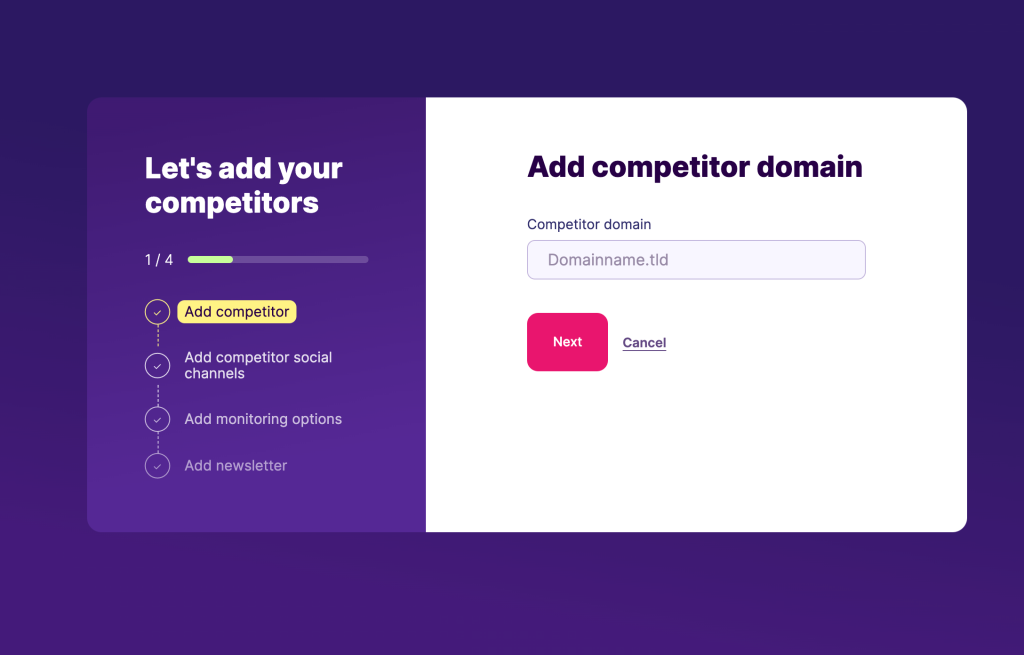
Step 4: Automate Competitor Tracking
Your Competitors App dashboard provides valuable insights, including:
- Social media activity
- Paid advertising campaigns
- SEO rankings and backlink profiles
- Website content updates
- Email marketing strategies
These insights help you spot trends, gaps, and new opportunities in your industry.
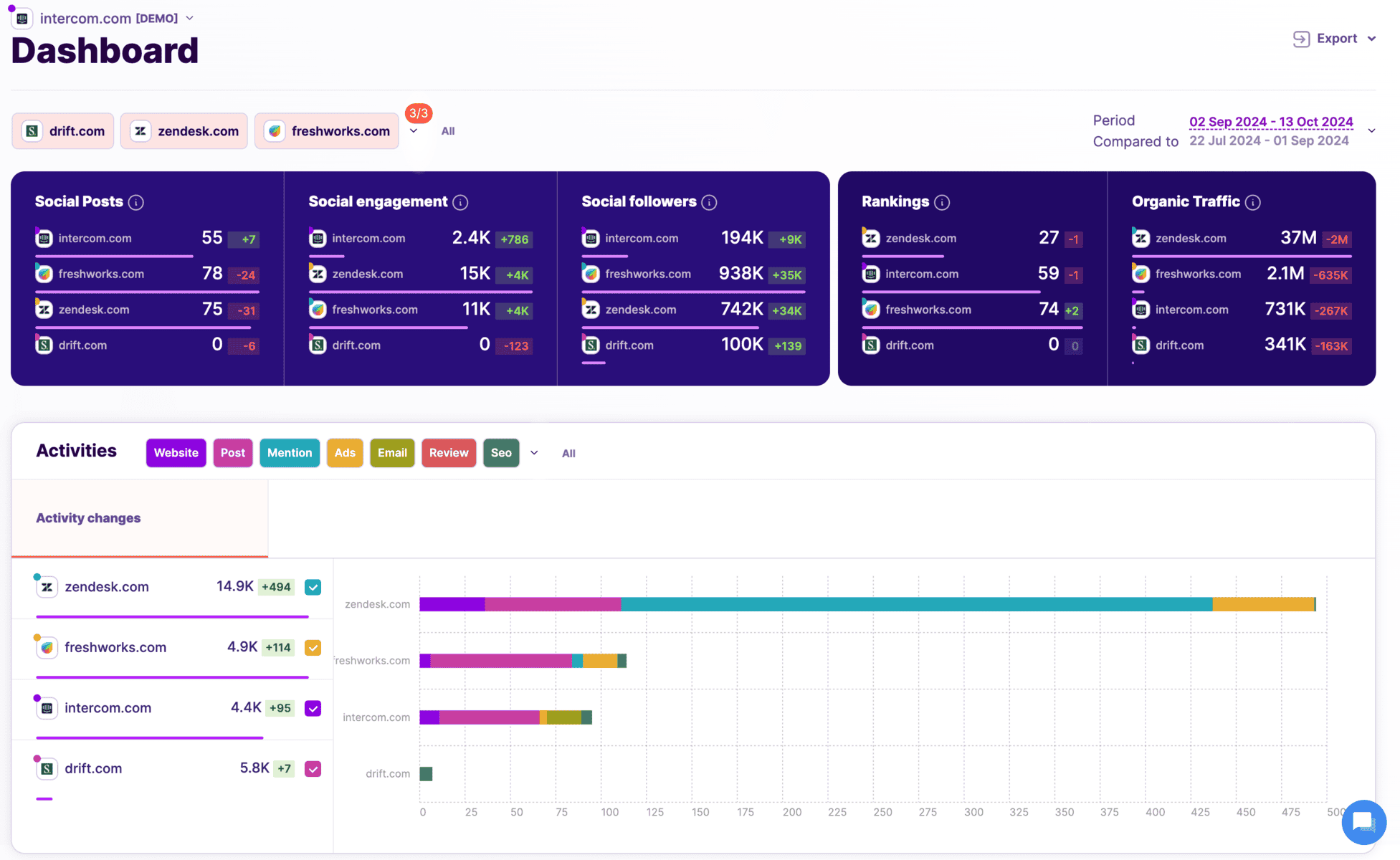
Step 5: Analyze Their Social Media Presence
See what platforms your competitors focus on, what type of content gets the most engagement, and where you can differentiate. Understanding their approach helps you refine your own content strategy.
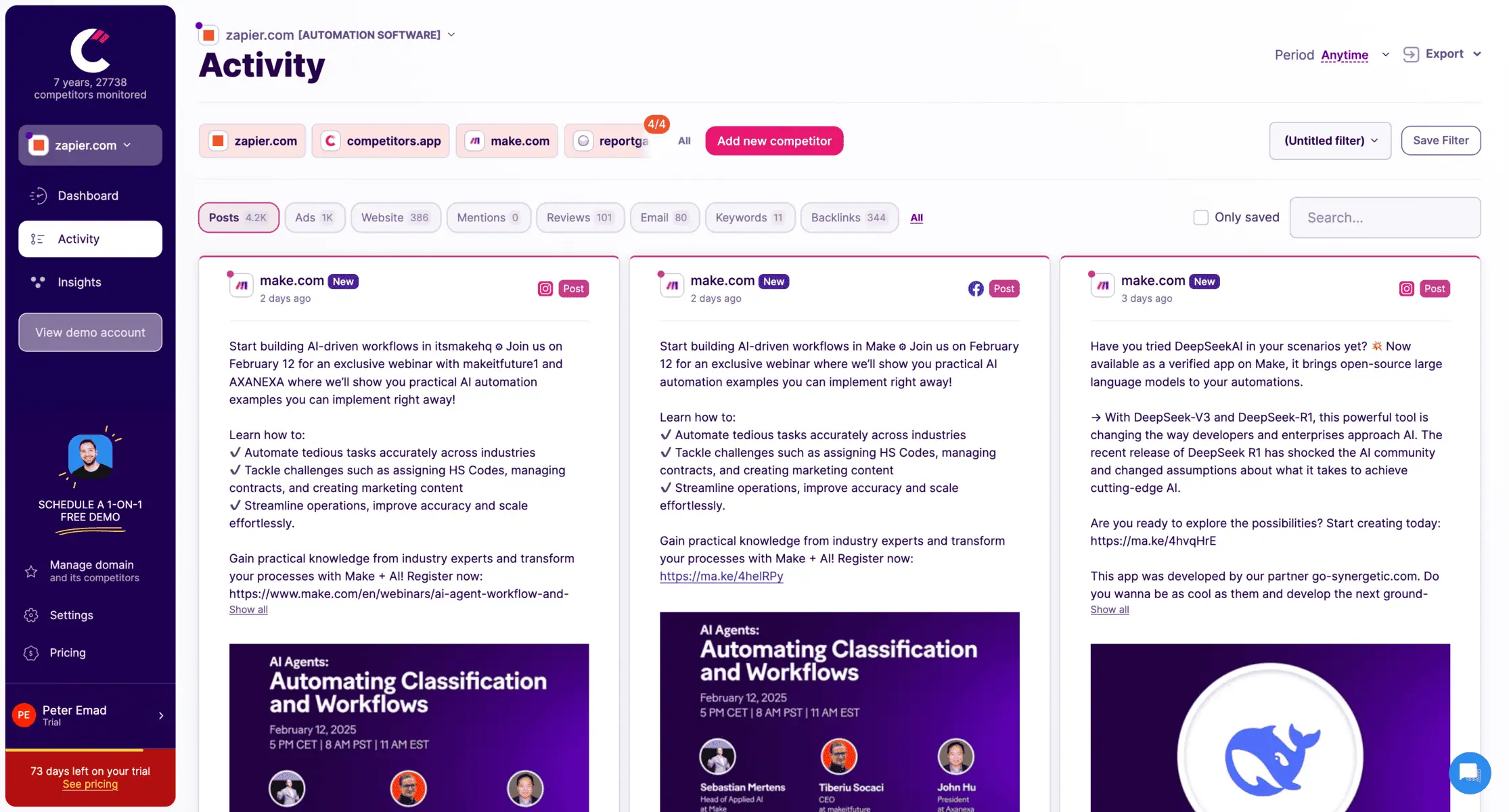
Step 6: Analyze Their Ads
Track where they’re spending their ad budget—Google Ads, Facebook Ads, or other platforms. Study their creatives, messaging, and offers to improve your own advertising strategy.
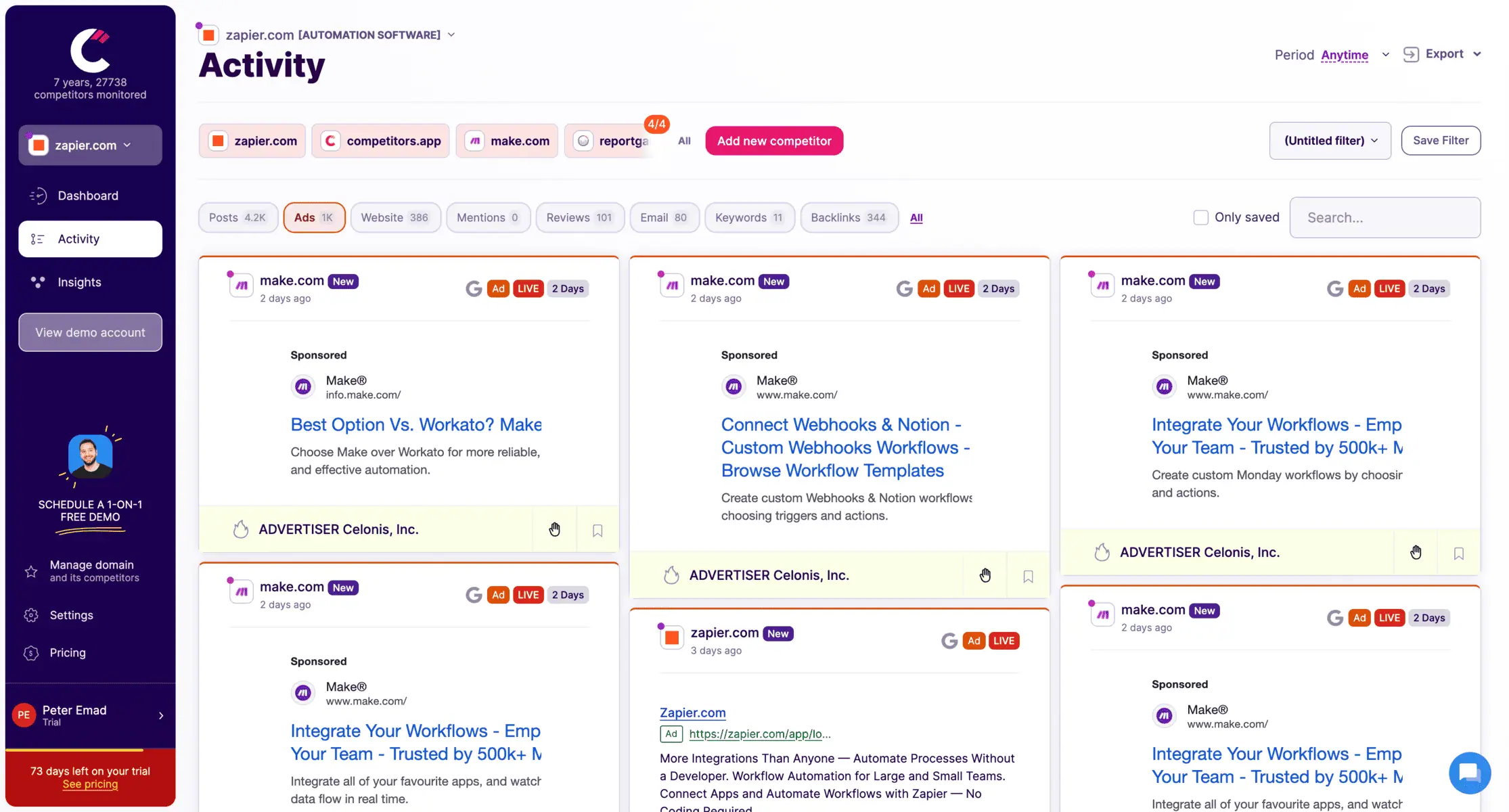
Step 7: Analyze Their SEO and Backlinks
Track where they’re spending their ad budget—Google Ads, Facebook Ads, or other platforms. Study their creatives, messaging, and offers to improve your own advertising strategy.
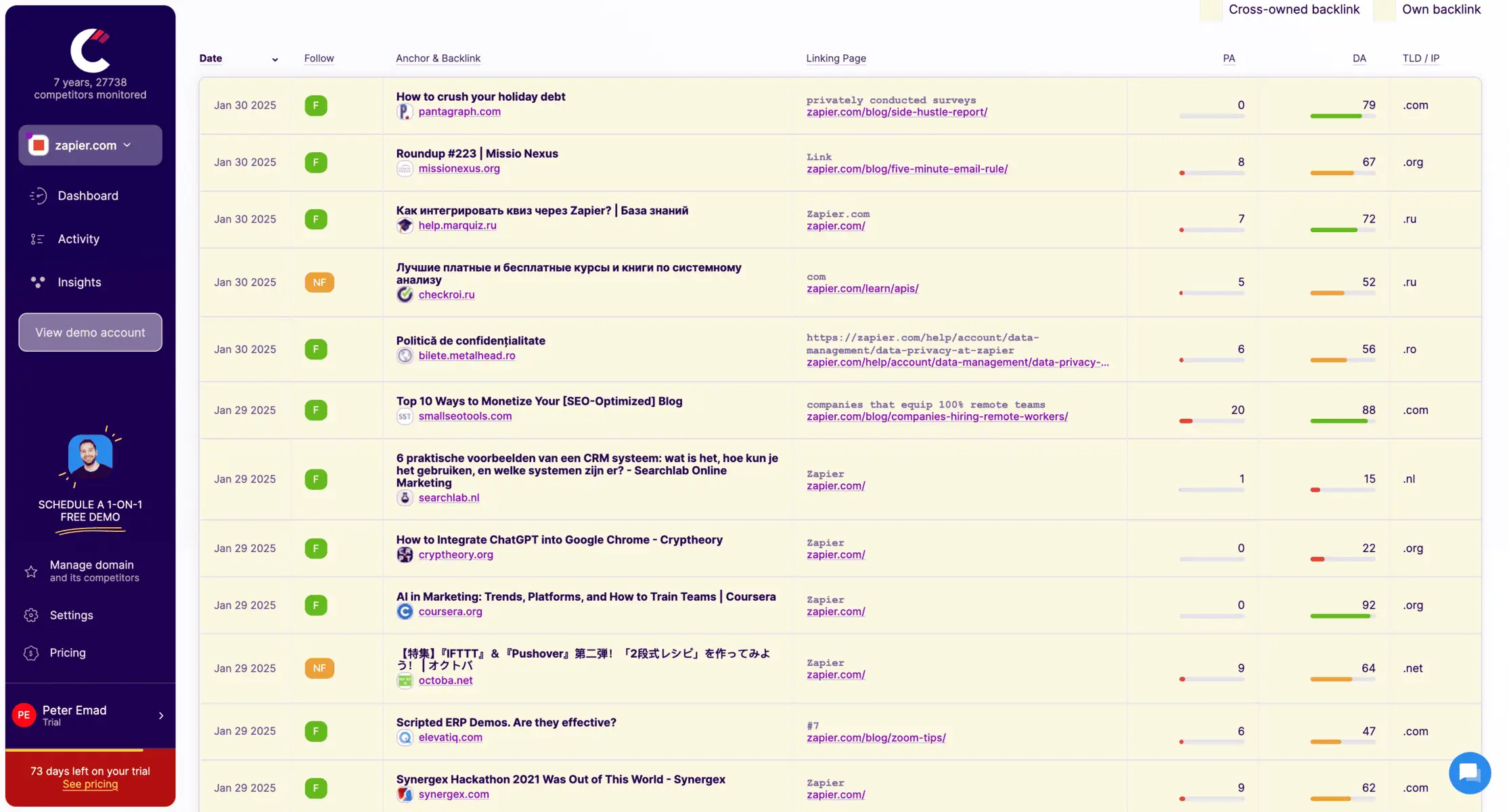

Step 8: Track Their Email Marketing Strategy
Monitor the frequency, tone, and promotional strategies of your competitors’ email campaigns. This allows you to adjust your email marketing for better engagement and conversions.
Step 9: Monitor Reviews and Customer Feedback
Keep an eye on competitor reviews from platforms like Google, Trustpilot, and G2. Understanding what customers love—or complain about—helps you position your business more effectively.
Step 10: Track Website Changes
Receive instant alerts whenever a competitor updates their website, including:
- New product or service launches
- Pricing changes
- Landing page updates
- New pages
- SEO changes
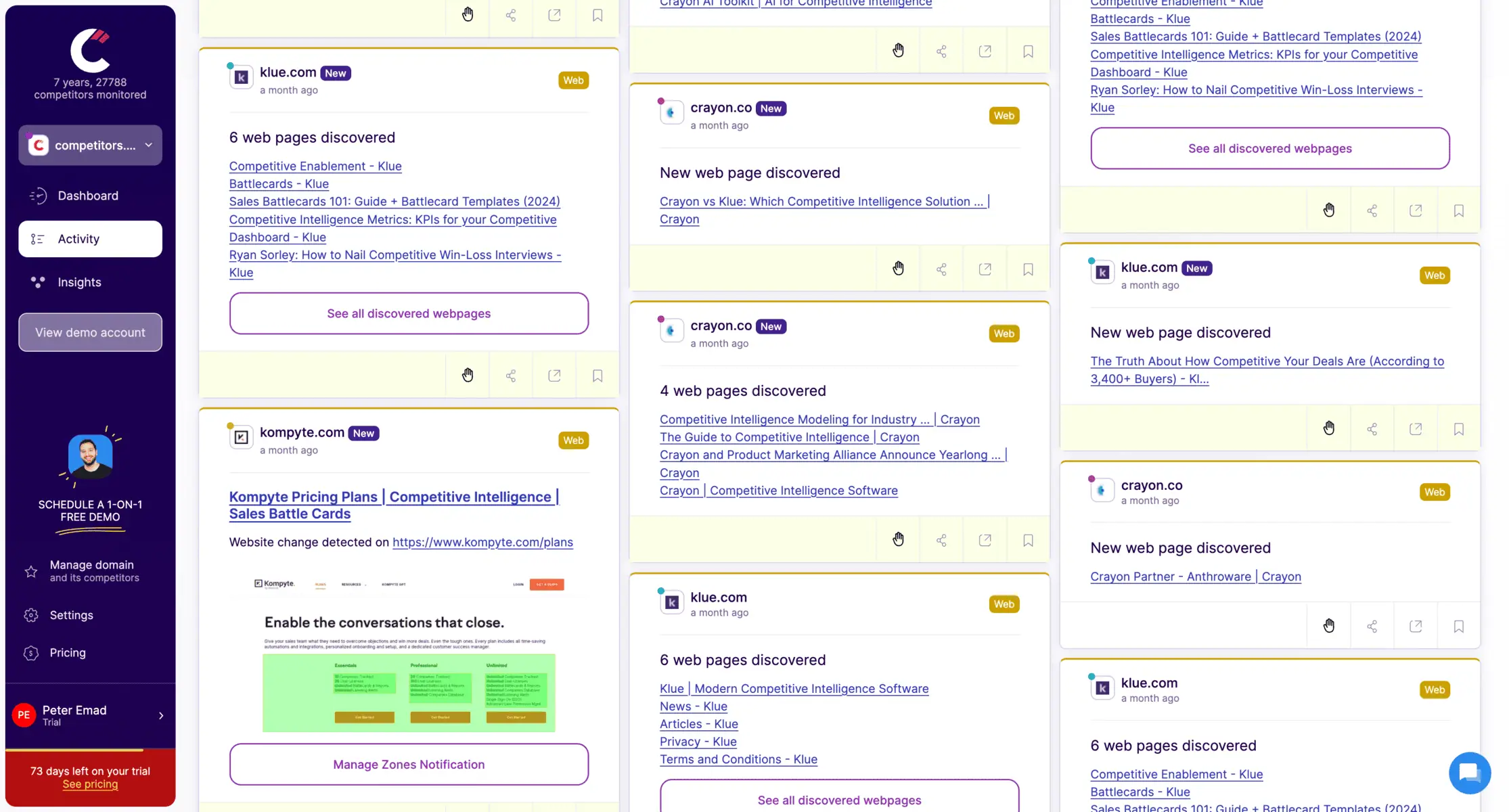
Staying informed about these changes allows you to react quickly and refine your own offerings.
By using Competitors App, you gain an automated, data-driven approach to competitor analysis, saving time while staying ahead of the competition.
How to Apply Competitor Insights to Your Business
Collecting data on your competitors is just the first step—the real value comes from applying those insights effectively. Learning from competitors should lead to tangible improvements in your offerings, marketing strategy, and overall business approach. Here’s how you can turn competitor research into action.
Differentiating Your Offerings
Once you understand what competitors are doing, the next step is figuring out how to stand out. Instead of copying their approach, find ways to offer something unique.
- Example: If most competitors sell budget-friendly options, you could position your brand as a premium alternative with better quality and customer service.
- Actionable Step: Analyse competitor products and identify gaps—whether it’s missing features, poor user experience, or limited service options. Then, create a value proposition that highlights what makes your business different.
Improving Customer Experience Based on Gaps You Identify
Customer reviews and feedback from competitors can reveal pain points that you can capitalise on.
- Example: If multiple customers complain about slow response times in your industry, offering faster and more personalised support could be a strong selling point.
- Actionable Step: Implement improvements based on common complaints. If competitors struggle with onboarding, for example, simplify your sign-up process and provide better customer guidance.
Optimising Your Marketing and Advertising Approach
Competitor marketing data helps you refine your own advertising strategies. If a competitor is succeeding with a particular channel or content type, consider how you can use it more effectively.
- Example: If a competitor’s social media ads are getting high engagement, study their messaging, visuals, and offers to understand what makes them effective.
- Actionable Step: Test new ad formats, tweak your messaging, or shift budget to high-performing channels based on what’s working for others in your industry.
Innovating Based on Competitor Successes and Failures
Sometimes, the best ideas come from observing what has already been tried. Learning from competitors isn’t just about replicating their successes—it’s also about avoiding their mistakes.
- Example: If a competitor launches a new product that flops, dig into customer reviews to understand why it failed. Was it too expensive? Lacking key features? Poorly marketed?
- Actionable Step: Use competitor failures as a learning opportunity to fine-tune your own product launches. If something clearly didn’t work for them, avoid making the same misstep.
By strategically applying competitor insights, you can sharpen your business strategies while maintaining a unique identity in the market. The goal isn’t to follow the competition—it’s to use their experiences to fuel your own success.
Common Mistakes When Learning From Competitors
While competitor analysis is essential for business growth, it’s easy to fall into traps that can do more harm than good. Simply tracking competitors without a clear strategy—or worse, blindly copying them—can lead to wasted efforts and missed opportunities.
Here are some of the biggest mistakes businesses make when they learn from competitors and how to avoid them.
Copying Blindly Without Differentiation
It’s tempting to replicate a competitor’s strategy, especially if they’re seeing success. But without a unique value proposition, you risk becoming just another option rather than a preferred choice.
- Example: If a competitor introduces a new loyalty program and you launch an identical one without any added benefits, customers won’t have a strong reason to choose your brand over theirs.
- How to Avoid It: Use competitor insights as inspiration, not a blueprint. Always ask: “How can we improve on this?” instead of “How can we match this?”
Misinterpreting Competitor Success and Market Demand
Not every move a competitor makes is a winning strategy. Just because they’re investing in a new marketing channel or launching a new product doesn’t mean it’s successful.
- Example: A competitor may introduce a premium pricing model, but if their sales decline as a result, following their lead could hurt your business.
- How to Avoid It: Look at performance indicators like customer feedback, engagement metrics, and revenue growth before assuming a strategy is effective.
Over-Focusing on Competitors Rather Than Your Unique Value
While tracking competitors is important, spending too much time analysing their every move can take focus away from your own brand’s strengths.
- Example: If your entire marketing strategy is based on reacting to what competitors are doing, you risk losing sight of your own brand identity.
- How to Avoid It: Competitor analysis should complement your strategy, not define it. Keep your core strengths and customer needs at the centre of your decision-making process.
Avoiding these mistakes ensures that learning from competitors remains a strategic advantage rather than a distraction. The key is to take insights, refine them, and apply them in a way that strengthens your unique position in the market.
FAQs on Learning From Competitors
How often should I analyze my competitors?
It depends on your industry, but regular monitoring is crucial.
- If you're in a fast-moving industry like tech or e-commerce, checking competitors weekly or monthly helps you stay updated on pricing changes, new product launches, and marketing shifts.
- For slower industries like B2B services or manufacturing, a quarterly or biannual review may be enough to track significant changes.
- The key is to avoid reacting impulsively—use competitor insights to plan your strategy rather than constantly adjusting based on their actions.
What are the best tools for competitor research?
There are plenty of tools that can help track competitor activities. Some focus on website changes, others on SEO, social media, or email marketing. The best approach is to choose tools based on what insights matter most to your business. Competitors App, for example, helps track website updates, email campaigns, and social media activity, making it a solid option for businesses that want real-time insights.
Can learning from competitors help startups and small businesses?
Yes, and in many cases, it’s even more critical for startups. Unlike established brands with big budgets for testing and experimentation, startups and small businesses need to be more strategic. Instead of wasting resources on trial and error, you can observe what’s working for competitors and apply those insights to make smarter decisions.
- For example, if a competitor is growing quickly through influencer marketing, it might be worth exploring similar partnerships instead of spending on expensive paid ads.
- If their customer reviews frequently mention poor support, offering excellent customer service could be an easy way to stand out.
How do I ensure that I’m not just copying my competitors?
The key is to focus on differentiation. Competitor research should inspire innovation, not duplication.
- Ask yourself: What are they missing? How can I offer something better or more valuable?
- If a competitor’s website lacks personalisation, consider adding AI-driven recommendations to improve user experience.
- If they’re running aggressive discount campaigns, you could focus on long-term customer loyalty instead of short-term price cuts.

